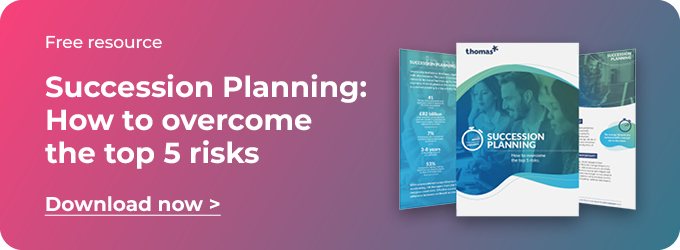For many senior leaders and executives in an organization, it can be difficult to think of the future and for many, a future without them at the helm. After all, no one really wants to think about leaving a job they love or a business that they have helped to build.
But when it comes to the future of an organization, the success or failure of the enterprise is down to the people that are left behind, and who can lead them to great success once someone leaves. That’s why developing a leadership pipeline has become not only an organizational objective but something that great leaders today need to think about to protect their legacy.
Knowing how to build a leadership pipeline is of course the biggest challenge that business leaders face today. They are planning the future of the business and getting the right people with the right attitude and skills is important.
We are going to take a closer look at what a leadership pipeline is, why you need to develop one, how to develop a pipeline and finally, how to test it.
What is a leadership pipeline?
A leadership pipeline refers to an organizational procedure for building and maintaining a leadership succession bench. From the development, evaluation, training, and promotion of certain individuals to become leaders, the leadership pipeline model looks at establishing leaders across the organization in order to create a level of succession that keeps the organization running at an optimal level.
There are four essential elements of the leadership pipeline. These include:
- Individual contributors
Developing certain individuals to become specialists or coordinators in order to fill your pipeline with staff-level, tactical employees.
- Managers
Moving the individual from a “me” to “we” mentality and skillset. This helps to teach others to get results from others rather than being reliant on their own abilities to get the job done.
- Mid Level Management
Learning how to be effective at leading change within the business and solving business problems within the organization with other managers involved in the problem.
- Executive Leaders
Succession is often planned years in advance, this can take so long because values and ideas need to be shared as well as a commitment to creating the right scenarios to play out for success. This is long term strategy planning that needs to be taken very seriously.
Why you need to develop your leadership pipeline
Importantly when it comes to developing the leadership pipeline, it is essential that you understand why you’re doing so. The need for new leaders in organizations who are changing or going through a period of staff leave need to become proficient more quickly and learn a more demanding set of skills which can present as a significant challenge.
There are a number of advantages to developing a leadership pipeline, these include:
- Pipeline provides leadership development clarity
A pipeline demonstrates how leaders are developed in an organization. How are they being selected? What are the essential criteria to understand in the choices? What experiences are they building within the organization to see how it will best work?
This is beneficial for employee engagement / motivation / experience as they can see a path for their own development and motivate their reasons for remaining and growing with the organization.
- Succession planning
A leadership pipeline isn’t just about finding a leader, it’s also about supporting leadership development at all levels. From the starter to the more seasoned professionals, there is always something to be gained from doing so.
The pipeline ensures there are personnel ready and able to move into roles when necessary. From the top to the very bottom, when people move up the career ladder, a succession plan is about giving everyone the tools they need to move into the next phase of their professional life.
- Coaching from existing leaders
When developing a leadership pipeline it gives your existing leaders the opportunity to coach and develop prospective leaders. That means that there is an opportunity to exchange ideas, processes and even a vision for the future and what that can look like from the people already doing the job. That experience is invaluable.

- Business expansion
The long term future and success is being developed at the time of the leadership pipeline being developed. What this also does is support and enable business development and expansion. What are the plans for the future? What opportunities may present themselves for a new leader? This will help with expanding the outcome of the organization for the long term development.
- Improves the financial performance of the organization
Selecting the right people to take over in key positions in leadership will also be responsible for the bottomline of the business. Those who have had experience in understanding where the opportunities lie to grow and develop will have a better view of the financial position of the business and with that, position it to take advantage of these areas.
- Develop an effective leadership style
You are building new leaders, and with that the opportunity to grow these leaders into a model that works. Things that happened in the past or weren’t effective can be phased out for a new leadership style which rewards a new way of doing things and looking for them in the leaders.
How to develop your leadership pipeline
There are few ways that you can build your leadership pipeline, however, they involve many of the same principles which include, development, evaluation, training and promotion. Here is one way to develop your own leadership pipeline.
- Invest in employee development
When developing a leadership pipeline it is important to remember that development happens across the board. From the starter to the seasoned leaders. By making learning and development for all employees at all levels it is a great way to demonstrate they are valued.
It also reflects that there are opportunities for career development and progression opportunities within the organization.
- Start coaching employees early
Again, as with investing in employee development at all levels, coaching should be a priority for individuals looking to develop their skills and become the future leaders of the organization. Starting coaching as early as possible in an employee's tenure is beneficial for leadership development
- Forecast future leadership needs for your organization
When creating the pipeline don’t forget to mention why you are doing this to your stakeholders. You want to be able to clearly explain what’s happening in the organisation today and what the future challenges are going to be in order to achieve the business goals and objectives moving forward.
- Integrate leadership development with individual career development and your organization’s succession planning scheme
The leadership pipeline should be integrated with / linked to career development and succession planning. How will you motivate your team to develop if their progression is not part of something bigger? Think about how you can tie the two together to help both the organization and the individual.
- Identify skills gaps using talent assessments
Using tools like talent assessments you can not only identify the skills gaps that are missing to develop great leadership talent but furthermore, you can plug the leadership pipeline into staff development programs as well. Who has the potential to lead? What do they need to succeed? These questions should be part of the answer to identifying skills gaps.
- Make company executives both teachers and program sponsors
Existing leaders should share their expertize and skills, not doing so is a waste of their talents and abilities but a missed opportunity to develop the leaders of the future as well. It helps to foster not only good practice within the organizational culture but also develop trust and improve communication from the top to the very bottom.
- Use a range of development and learning resources
There are many different ways that you can teach and learn, such as from traditional classroom learning to coaching, mentoring, self-paced learning, role playing, workshops and more. Mix up the different learning methods in order to provide more options for staff who learn in different ways.
- Start coaching your team early
Don’t wait until you need a succession plan or leadership plan until you have to. This should be part of the on-going process to develop a strong, capable and successful team that are multi-skilled and capable with the challenges facing the organization.
This could be highlighted in the interview stage or more effectively in the onboarding process. This will encourage your teams to think about the future as well as the present of the business and what impacts they can make from a very early stage in the organization.

Test and evaluate your leadership pipeline
Fundamentally, what you want to understand is if your leadership pipeline is going to work and how well it will work. Will your leadership pipeline be fit for purpose or not?
There are many different ways you can check if the pipeline is going to work through a series of tests and evaluations that can be carried out by both internal and external teams.
What do these tests look like? Here are some examples:
- Does your leadership pipeline support promotion from within your organization?
There are around 20 - 30% of organizations that replace senior executives and managers from within. Does your organization develop and support the growth of staff internally to become the future leader of the organization? Is there enough mentoring taking place or succession planning that happens in a timely manner for this to happen?
- Is your leadership pipeline collectively owned?
Who owns the leadership pipeline? It is important to understand that not only one person should own this aspect but multiple people in the organization. Why? Because it helps to motivate and foster the growth required to build a leadership pipeline around the organization as well as removing the onus iot it being a single requirement for the leaders of the current organization.
- Is your leadership pipeline transparent?
Sharing and communicating how the development and promotion process works is good for motivation, engagement and employee experience. What is being done to build more leaders in the organization? What else can be done to aid in the development of the organization to help it grow further and to make it more effective in delivering future leaders and solutions?
- Is your leadership pipeline simple and consistent?
You don’t need to have a complex pipeline, in fact, you can have a simple solution in the development of these systems. Simply laying out what you will do to encourage development, the platforms you will use, the vision for a leadership pipeline and how this will be developed with all stakeholders is essential.
Finally, it must remain consistent. I.e. You set out to develop the future leaders of the organization within a three year window - that must be the same across the board for all parties involved.
- Does your leadership pipeline track progress?
How do you know if it is going to be successful if you don’t track the progress of the pipeline? This is a basic requirement for effective leadership pipelines. Are you having regular conversations with the stakeholders in the process? Are you monitoring development within teams and individuals? You want to be able to see behavior change and the people doing the mentoring want to be in charge of creating the circumstances of making it happen as best as possible.
Conclusion
The success or failure of the enterprise is down to the people that are left behind, and who can lead them to great success once someone leaves. This is why developing a leadership pipeline is essential. You want to have the right people in the right positions but also, develop the organization as a whole to have stakeholders step up and into the right areas so as to help the organization grow.
From the development, evaluation, training, and promotion of certain individuals to become leaders, the leadership pipeline model looks at establishing leaders across the organization in order to create a level of succession that keeps the organization running at an optimal level.
One of the best ways to track and evaluate these future leaders is by using psychometric assessments like those on the Thomas talent assessment platform. This will help with evaluating talent and what part of their career journey they are at to help the business succeed.
If you would like to learn more, please speak to one of our team.





